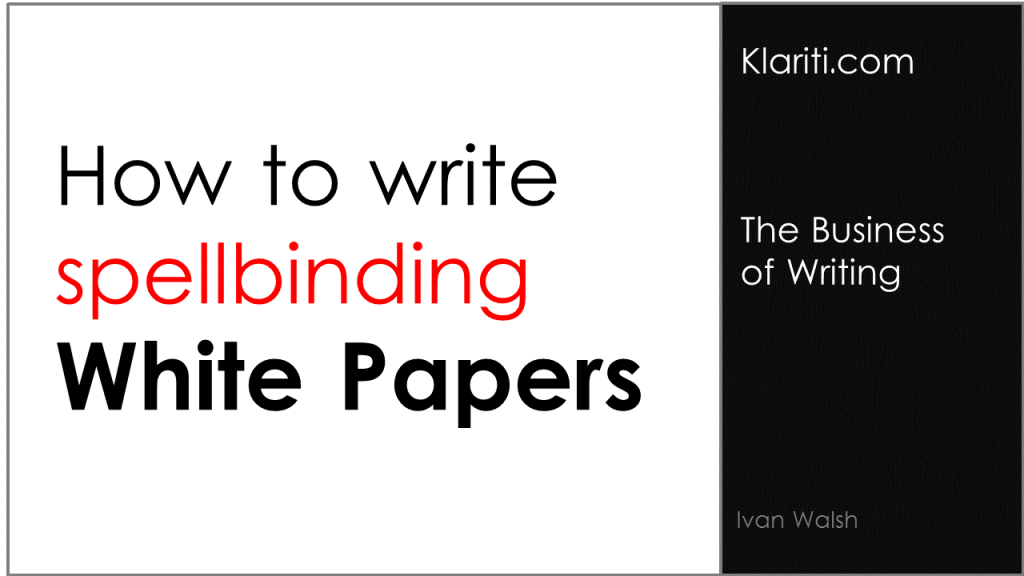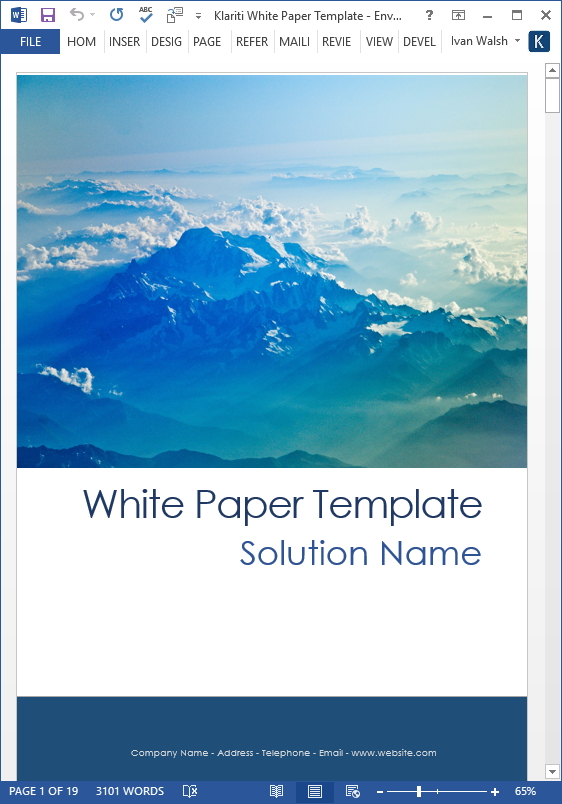White Paper Templates
White Paper – Document Review Checklist
When writing white papers, the document review phase helps you identify gaps, improve the organization, correct flaws in the narrative, and iron out other weaknesses.
What is a Document Review?
A document review is a formal, structured review of a document to ensure it is ready for publication. Typically, the document review requires multiple reviewers to ensure the document is assessed correctly. For example, a complex document review may require input from technical, business, and sales team members.
White Paper – Review Checklist
The document review phase is often overlooked or dismissed as an irritating editing task.
But if it’s rushed through, to close to the publication date, the author won’t have time to fix the necessary structural changes, improve the narrative, or add tables, charts, and diagrams to compliment the text.
If you don’t have time to review the entire document at a line item level, examine the following five points. Get these right and your document will be more cohesive, persuasive, and generate more interest.
15 royalty-free MS Word White Paper templates.
White Paper Template – Instant Download
Message
In one sentence, what’s the message we want to get across to the reader. The message is what you want the reader to take away and discuss with her colleagues.
For example, if someone asks the reader, “Well, what was it about?”, her response should reflect your message.
They might paraphrase what you’ve written but they’ll convey the gist of the white paper. Of course, you won’t know this unless you follow up by email or use social media.
Point of View
Your point of view is how you, as the voice of your company, see the issue under discussion.
- Your point of view is your angle on the main topic.
- It reflects how you’ve examined the underlying issue, weighted up the options, and come to a decision.
- It’s your position, your stance, on the subject. White papers, written without a point of view, come across as timid, weak – that classic ‘sitting on the fence’.
Readers respond to someone with an opinion. You don’t need to rant. Instead, state why you believe in your opinion, then back it up with the necessary market research facts, quotes, and statistics.
When reviewing the document, examine your point of view (pov) by asking:
- What is our attitude towards the main topic?
- How have we expressed this?
- What evidence do we have to support our claims?
- Does our point of view contract itself? Which can happen in team writing.
Title
The title should identify the main topic, often supported by the most important point.
- What title is the most effective to get this message across?
- What clichés, jargon, or industry speak must we avoid?
For example,
- Mobile Commerce: What you need to know
- Lean Business Planning: Ten Lessons Learned
- New models for Mobile Commerce
- Big Data: The Economics of SaaS
Note that many titles use a two-part formula. The first part identifies the main topic, the second part, discusses the features, benefits, or solution to achieve this.
Theme
The theme of your white paper should address a pressing need, pain point, or concern for the reader.
- Reinforce the theme by highlighting the benefits offered by the product/service.
- What’s the main trust of the document?
- Does the narrative stay on track?
- Is there a secondary theme? How important is this?
Reader
One of the most common mistakes when reviewing a document is to get lost in the finer details of grammar, style, and presentation while forgetting the most important point – the reader.
- What do they need to know?
- What problem do they have?
- How are we helping them resolve this?
- How do we educate them?
- Have we given them information they couldn’t find elsewhere?
When you start writing the white paper, you probably go through the following stages:
- Needs assessment
- Storyboard
- Outline
- Draft / refine / review
- Draft / refine / review…
- Publish
As you move from one stage to the next, it’s easy to deviate from your initial commitment to create a document of real, practical use to your reader. You may not notice this at first. However, when you set the document aside for a while, then return to it with fresh eyes, you could be very surprised to see how far it’s drifted from its initial goal.
Tone, message, and concepts may have become cluttered, confused, or contradictory.
To resolve this:
- Return to the original needs assessment document.
- Examine the most important issues you flagged at project kickoff. Are these addressed in the document?
- If not, develop new material and blend it into the narrative. Don’t shoe horn it in.
All writing, editing, and review tasks should be subservient to supporting your over-arching aim to write materials that help, educate, and interest the reader.


